Dynamic
KAYUPUTIH
Digital animation
2 min. 24 sec.
Silent
720p/25
2008, revised 2011
KAYUPUTIH is an abstract animation that continues the research started with WONOKROMO and which, like the previous work, focuses on visual noise.
Various animated sequences depicting various types of visual noise were made, sometimes suggesting biological organisms. Four of these sequences were then selected and three sections were thus created, presenting the images in different ways.
KAYUPUTIH has been shown at MLAC – Sapienza, University of Rome (2021); Crater Collective, Barcelona (2015); National Gallery of Art, Washington D.C. (2013); Danish Film Institut, Copenaghen (2011); Seeing Sound, Bath (2009); Cinema Azzurro, Ancona (2009); Nuovo Cinema Aquila, Rome (2008).
WONOKROMO
Digital animation
5 min. 48 sec.
Silent
Black & White, 768×576, 25 fps, 8 bit, Photo JPEG compression
2003-04![]()
WONOKROMO is a research about visual noise divided into two sections. The concept of noise is related to the concept of signal. A signal serves to transmit information, on the contrary noise is a disturbing element that prevents the transmission of information. There are various types of noises: the most known is sound, but in truth for each type of signal there is also a type of noise. So the visual noise is connected to the visual signal.
I created the first section by animating synthetic hairs, changing different parameters such as their thickness, curliness, stiffness, gravity, and others. I chose the best sequences and combined them all, resulting in more sequences. Then I chose again the best ones, and put them together over time.
The second part was more complex to create. Fig. 1 shows a table of the possible noises I could chose in the sofware I was using: those actually chosen are marked in red.
WONOKROMO has been shown at Seeing Sound, Bath (2009); Cinema Azzurro, Ancona (2009); Studio Matteo Boetti, Rome (2008); Visual Music Marathon, New York (2007); MuVi, Granada (2007); International Mediterranean Film Festival, Montpellier (2005); Fondazione Morra, Naples (2004).
Table of possible noises
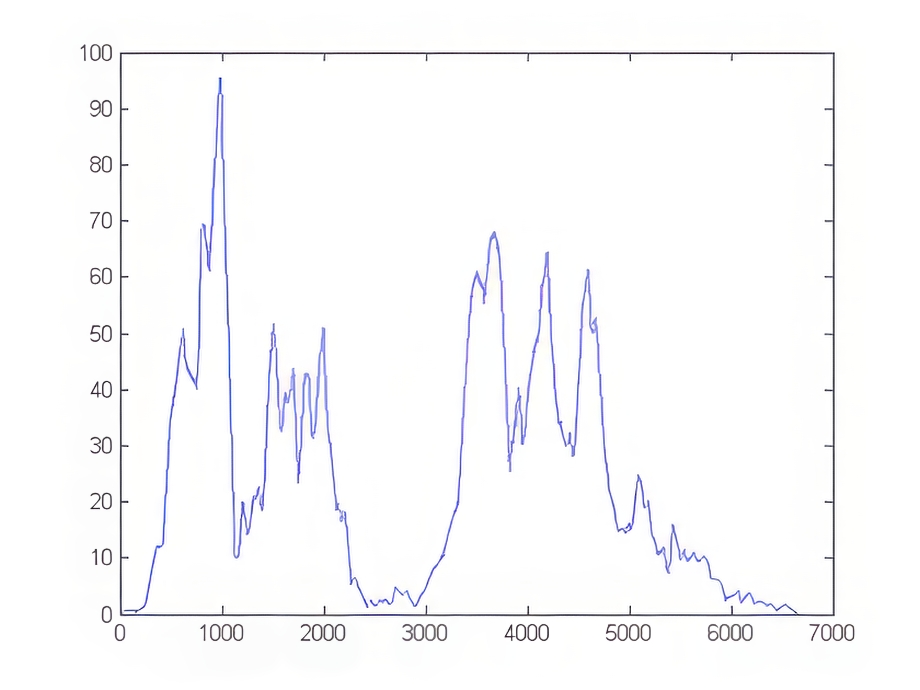
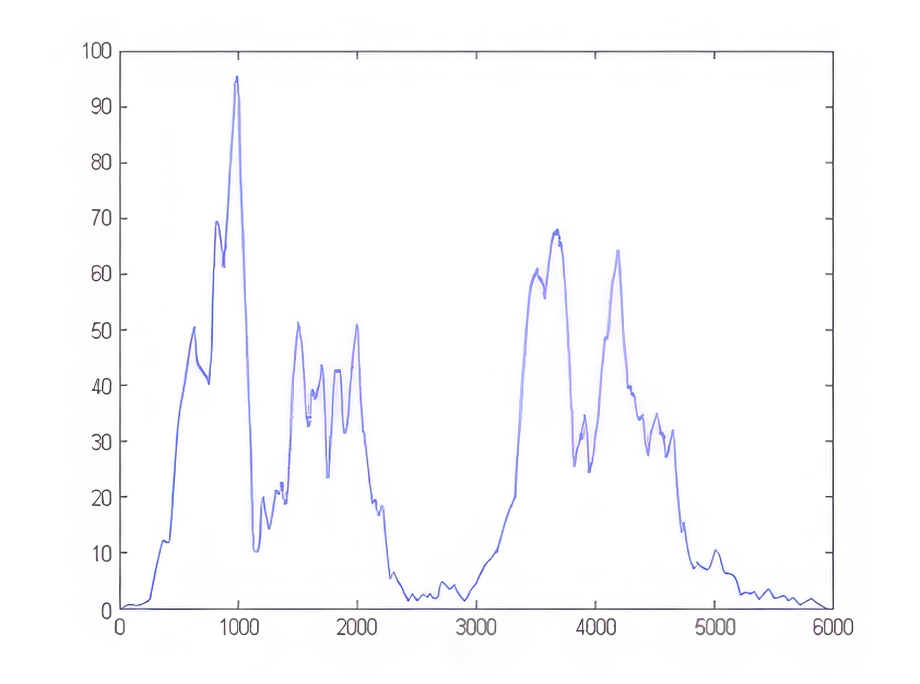
Global luminosity of the second section, before and after final cuts
In order to create the animation, I first mapped the noises on a flat synthetic surface, and thus created several sequences in which different parameters were changed each time. This way I got 66 different sequences.
I then combined them all and chose the best ones, resulting in a first level of 116 new sequences. This process was particularly long, as for each sequence all the others were tried. Each combination was also done using different transfer modes.
Afterwards, I chose the most interesting 60 results, and combined them together, always with different transfer modes. This process gave me a second level of 230 new sequences.
At that point it was difficult for me to navigate among the sequences I last created. Therefore, I decided to classify them and to create a database containing different parameters related each sequence. That helped me to choose the most suitable sequences in order to create the final animation. The parameters in the database were category, quality, duration, speed, density, global luminosity and maximum luminosity.
The last two parameters, global and maximum luminosity, were obtained by analysing the first frame of each sequence. Other parameters resulted from image analysis, such as average intensity, average contrast, third moment, smoothness, uniformity and entropy. Although interesting, these last six parameters were not actually taken into account. The ones that were indeed used were category, quality, density and global luminosity.
I finally composed 36 sequences, creating the second section.
Once the complete animation was done, I further analysed its global luminosity, and decided to cut some parts to improve the overall fluidity.
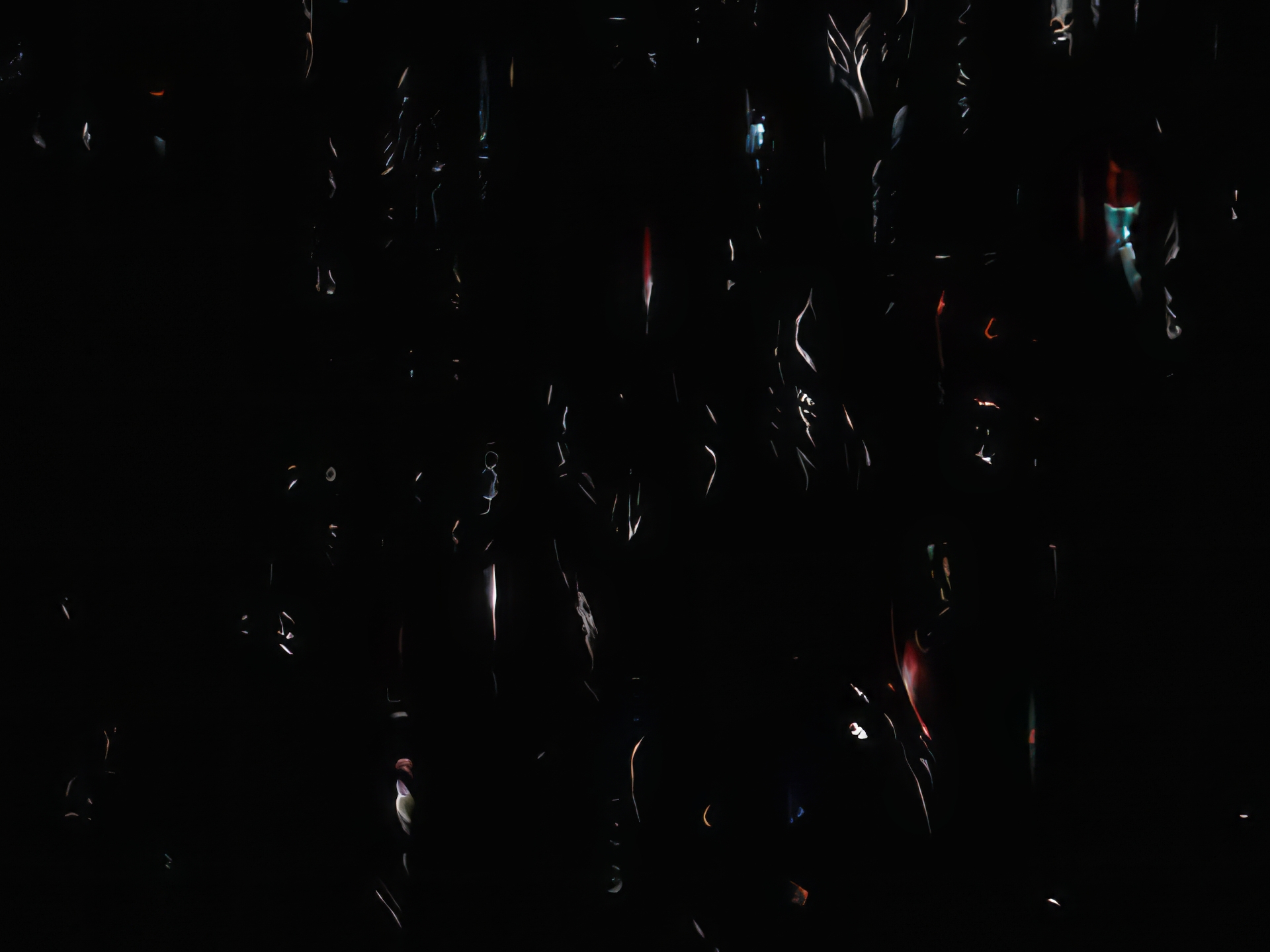
Samson Revisited
Digital animation
8 min. 30 sec.
Stereo, 44 KHz, 16 bit
NTSC, Region 0, 4:3
2003![]()
Samson Revisited is an animation commissioned by the musician Dinu Ghezzo.
According to the author, the composition “is an extension of the music written for John Milton’s play Samson Agonistes, as a commission from Nancy Bogen’s theater group. It is written with an eye to the stylistic features of the music of Milton’s time intertwined with today’s electronic arsenal. It represents my vision of a combined world of late renaissance and early baroque music that is projected through the mind and ear of a Twentieth or Twenty-first century composer.”
The method I used to create the animation was that of a visualization of audio events, made with accuracy but at the same time with some degree of freedom.
The synchronicity with the audio events was sometimes exasperated, but sounds were visualized only following personal intuition.
A fundamental feaure was that not all sounds were visualized, and this was to preserve a perceptual balance. In other words, some audio events were ignored, just to not overwhelm the audience with visual events. In that case, the audience would have been captured by the visual elements more than by the music.
This approach also made it easier to create an audiovisual counterpoint. Which could explain why there is some visual silence, occasionaly. Also, in the live performance at Merkin Hall, there were a few live players performing. The visual silence I created was then used to emphasize the live parts.
I made three main kinds of visualizations, corresponding to the different sections of the piece. At the beginning of the piece I used some sinuous shapes, that slowly evolve. The whole feeling was in fact soft.
Some masks, depicting Samson, Dalila, and the choir, were originally given to me by Ghezzo. The masks were then processed in different ways and used in the second section.
In the mid part of the piece there is a lot of noise. I then used different kinds of visual noise to create the feeling the music was giving to me. Underneath there are the masks, but in this case they just give color to the noise. At the end of the fifth minute I broke completely with the music, and the visual part becomes independent.
In the last section, which is similar to the first section, I used the same kind of images used at the beginning, with less movement and with some variations in hue.
Samson Revisited has been shown at Merkin Concert Hall, New York (2003).

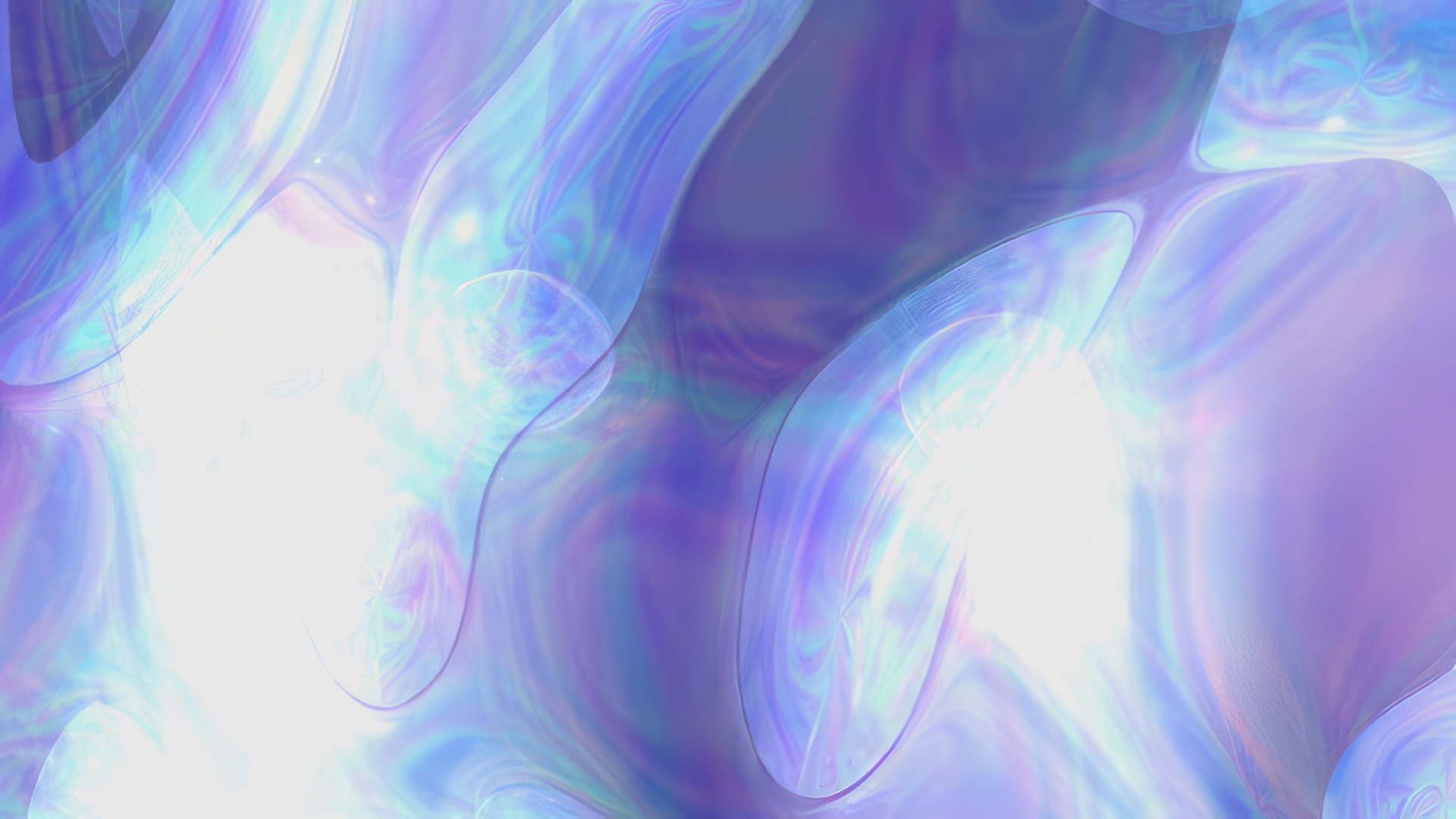



motion picture
Digital animation
3 min. 20 sec. loop
Silent
Color, 848 x 480, 15 fps, 24 bit, Sorenson Video compression
2000![]()
This series of animations are a kind of moving painting. The goal was in fact to create a dynamic painting in constant change, an idea that took advantage of flat screens, new for that era.
variazioni
Digital animation
3 min. 18 sec.
Stereo, 44 KHz, 16 bit, QDesign Music 2 compression
Color, 640 x 360, 15 fps, 24 bit, Sorenson Video compression
2000![]()
variazioni features three-dimensional objects and stereo sounds set in relation to each other.
The sounds were conceived first, digitizing several already existing sounds and subsequently manipulating them. Hundreds of sounds resulted from this process. I imagined what their visualization could be and then selected them and finally mixed them.
Once the soundtrack was completed, the 3D objects representing the sounds were created, often but not always following the correspondences established in the thesis Perceptual correspondences of abstract animation and synthetic sound: time, space, intensity and timbre/visual appearance. In order to achieve a better attention balance for the audience, not all musical events were translated into visual events, as this would have resulted in the predominance of visual elements over musical ones.
Moreover, the temporal coincidence was not always necessarily respected: sometimes audiovisual events, even if otherwise correspondent, happen at different moments. In other instances, a higher level of cognitive mapping was used. For example, in the central part of variazioni sounds are more repetitive, and the visualization of this section was conceived in such a way to better render that hypnotic quality, overcoming other rules.
Finally, in some cases the same sound was visualized in different ways. Therefore, even though some general rules were applied, exceptions were allowed whenever it was deemed appropriate.
shape = sound
Digital animation
3 min. 28 sec. in loop
Stereo, 44 KHz, 16 bit, QDesign Music 2 compression
Color, XGA, 10 fps, 16 bit, Video compression
1999![]()
This animation is an experiment aiming to test the audio capabilities of MetaSynth, a piece of software that creates sounds by interpreting an image. Pixels which appear high in the image generate high frequencies, and vice versa. Brighter pixels produce louder sounds.
FLUIDI
Digital animation
1 min. 50 sec.
Silent
Black & White, 512 x 342, 30 fps, 1 bit, Animation compression
1992![]()
This black and white abstract animation is made up of a series of synthetic sequences created with the 2D animation custom software ab stra, based on shapes that change over time and space.
FLUIDI has been awarded at the First International QuickTime Festival in San Francisco.
ISOLE
Digital animation
2 min. 5 sec.
Silent
Color, VGA, 15 fps, 8 bit, Animation compression
1990![]()
This abstract animation is made up by a series of synthetic sequences, obtained with the use of moving masks that reveal the textures beneath. A custom software was written in order to obtain the masks’ shapes and control them, and to allow the editing of the sequences.
An interactive version of this animation enables the user to control the animated sequences with the computer keyboard: each sequence corresponds to a key. The results are therefore different each time, and one can create an interactive animation in real time, playing it with the keyboard: the parallel with the musical approach is obvious. It is also possible to save the animation and play it again.
Some of the sequences were conceived by Dagmar Trinks.
Dynamics
Digital animation
3 min.
Quadraphonic, 44.1 KHz, 16 bit
NTSC
1988
Coauthors software: Bob Sabiston, Karl Sims
This work was part of my M.S. thesis Perceptual correspondences of abstract animation and synthetic sound developed at the MIT Media Lab in 1988. It is primarily a 3D visualization of synthetic sounds based on four types of audiovisual correspondences: spatial coincidence, temporal coincidence , volume/brightness, timbre/shape-color. Once created, the abstract objects, and consequently the sounds associated with them, were used to compose the audiovisual work.
The original version was projected on a 4 x 3 m screen, with speakers positioned at each corner of the screen to provide spatialized sound along both the horizontal and vertical axes. This was achieved by synchronizing two stereo digital players with a videotape player.
ISOMORFISMI SUONO LUCE – RITRATTO
Digital animation
2 min. 49 sec.
Stereo
Color
1986![]()
ISOMORFISMI SUONO LUCE is a series of works presented at the Venice Biennale. In this animation real world images, digitized with a camera, are processed and edited along with abstract synthetic sequences. The music is made up of synthetic and recorded sounds.
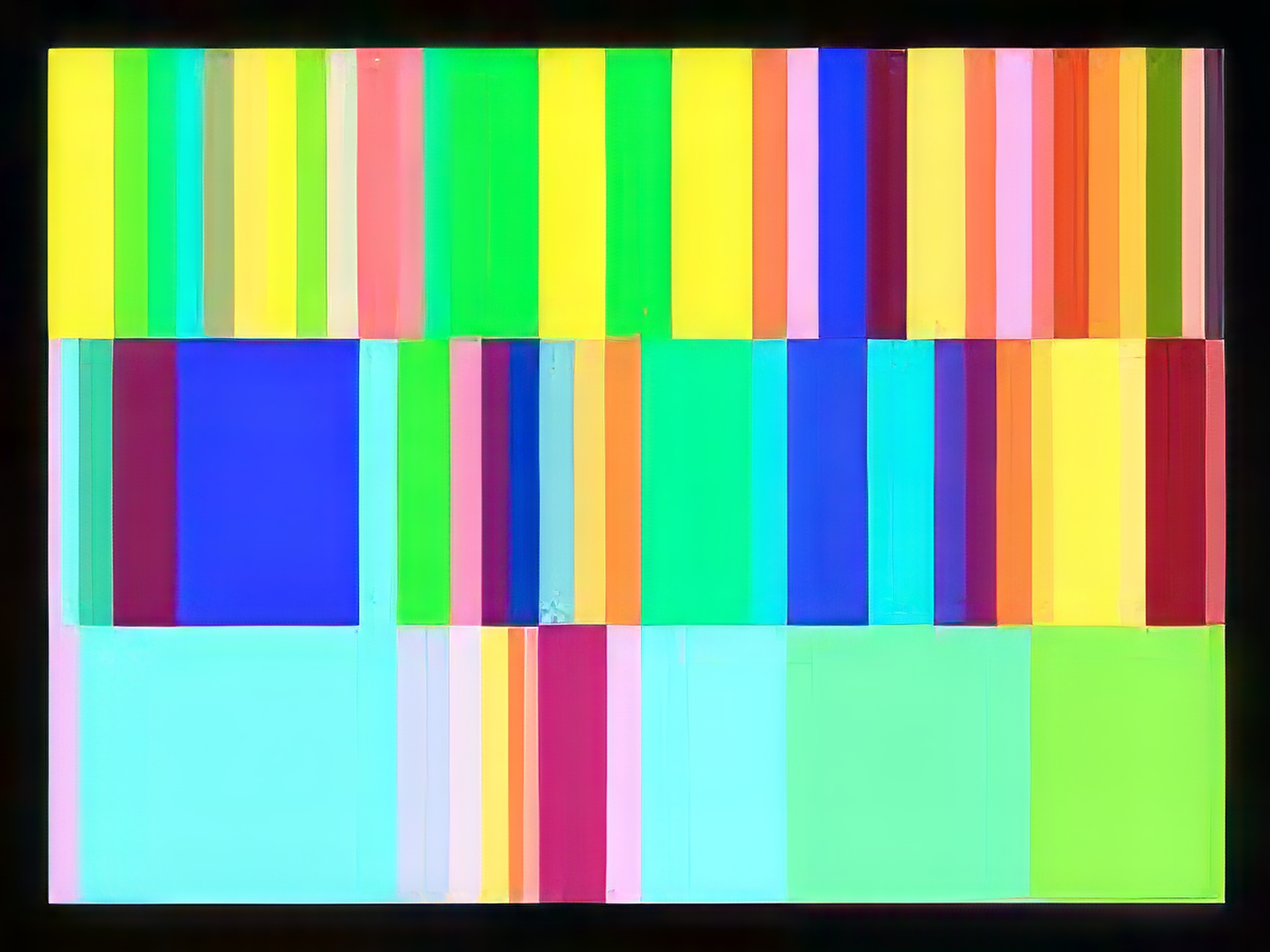

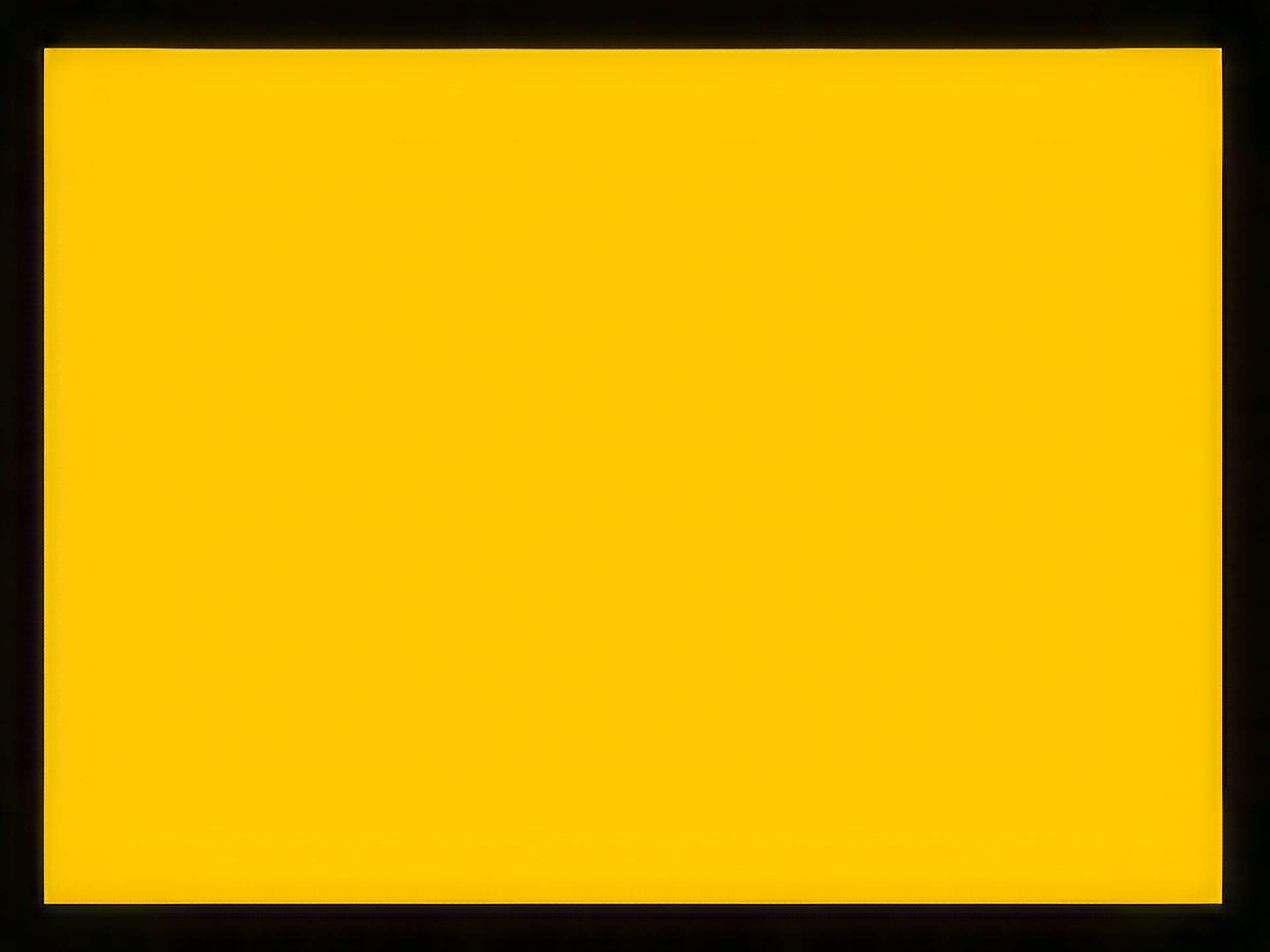
ISOMORFISMI SUONO LUCE – RITRATTO
Digital animation
1 min. 48 sec.
Mono
Color
1986![]()
In this animation each coloured rectangle corresponds to a note, following the theories of the Italian painter Luigi Veronesi, who had made several paintings based on the music of various composers, including Johann Sebastian Bach.
Every horizontal stripe of the animation represents a musical voice. Rectangles’ width is set by notes’ length, while sound pitches control rectangles’ hues, and brightness is related to loudness. Rectangles appear on the right side of the screen in synch with the tones.
STUDIO 1 is the visual representation of the Canon Perpetuus super Thema Regium from Musikalische Opfer, BWV 1079, by J. S. Bach, accompanying the animation. It should be noted that this section of Musikalische Opfer was not composed for a specific instrument, and this, coupled with the fact that it is a perpetual canon, makes it ideal for a digital version.
In this animation, which follows STUDIO 1, each colored rectangle corresponds to a note of the musical scale, and is shown only when its note is played, creating a sort of colored keyboard. This is a variation over the theories of the Italian painter Luigi Veronesi. Two musical voices are heard only, while the third voice is just visualized. Rectangles’ hues are set by sound pitches, while brightness represents loudness.
In STUDIO 2 each colored rectangle corresponds to a note of the musical scale, and is shown only when its note is played, creating a sort of colored keyboard. This is a variation over the theories of the Italian painter Luigi Veronesi. Two musical voices are heard only, while the third voice is just visualized. Rectangles’ hues are set by sound pitches, while brightness represents loudness.
STUDIO 2 is also the visual representation of Canon Perpetuus super Thema Regium from The Musical Offering, BWV 1079, by J. S. Bach, which accompanies the animation.
In STUDIO 3 the whole screen is colored. As in STUDIO 1 and STUDIO 2, pitches are mapped onto hues, and brightness onto loudness.
The music of STUDIO 3 is a random sequence of sounds.
Città orbitale
Digital animation
6 min. 23 sec.
Stereo
Color, 256 x 192
1985
Musical timbres: Riccardo Sinigaglia![]()
Città orbitale is made up of eight sections, lasting 55, 34, 89, 55, 34, 55, 21 and 34 seconds respectively. All these numbers belong to Fibonacci’s sequence.
In addition, the visual events in Città orbitale — such as the appearance of a point, a line, or a shape — always take place in points that belong to the golden rectangles inscribed within the golden rectangle defined by the frame.
This work is about a journey towards a hypothetical hologram in deep space. The essential figurative style borders on the abstract. It was made with a Yamaha CX5MII computer, which was chosen for its unique audiovisual capabilities.
Città orbitale was presented at the Camerino Electronic Art Festival in 1985 in the form of an installation, in which, in addition to a monitor, there was also an icosahedron made with wooden strips and a hologram of the same object.
Voyager
Digital animation
4 min. 41 sec.
Stereo
Color, 280 x 192
1982-84
Coauthor software: Michele Böhm
Coauthor music: Riccardo Sinigaglia
![]()
Adriano Abbado’s first digital work, derived from the videotape Viaggio, Voyager is composed of a series of static images that dissolve one each other in various ways. The music was created with analog electronic instruments. Voyager is a narration with images from primitive cultures to sidereal spaces.





